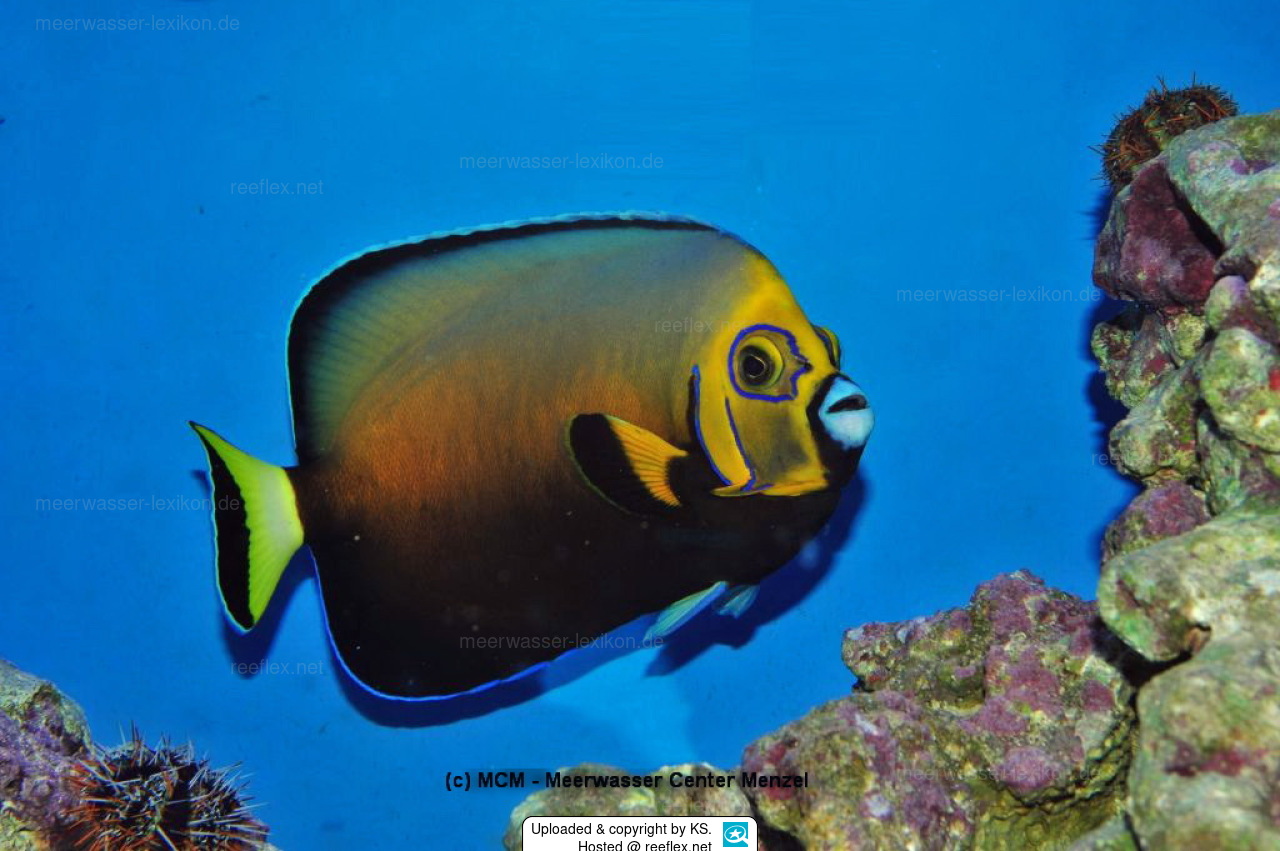Info
(Waite, 1900)
Chaetodontoplus conspicillatus is also known as the Conspicuous Angelfish, Conspic Angel or Spectacled Angel. They are found only on the southern part of the Great Barrier Reef, east to New Caledonia and south to Lord Howe Island on coral and rocky reefs down to a depth of 40 m. Juveniles live in shallower water.
Adults are blue-grey dorsally grading to a dusky colour below. The face is yellow with blue on the operculum and around the eye. The dorsal and anal fins are dark at the base and pale along the outermost margins. The caudal and pectoral fins are yellow basally. Juveniles are black with a greenish-white dorsal fin.
Chaetodontoplus conspicillatus is not much more difficult to care for than other larger angels, but don't attempt it if you have to ask how to get a finicky fish to eat. It is an omnivore and his diets should consist mainly an sponge based prepared items as well as a lot of algae.
Remarks:
Most large angelfish are well known for nipping at large-polyped stony corals and some soft corals as well as tridacnid clam mantles.
Classification: Biota > Animalia (Kingdom) > Chordata (Phylum) > Vertebrata (Subphylum) > Gnathostomata (Superclass) > Pisces (Superclass) > Actinopterygii (Class) > Perciformes (Order) > Pomacanthidae (Family) > Chaetodontoplus (Genus)
hma
Chaetodontoplus conspicillatus is also known as the Conspicuous Angelfish, Conspic Angel or Spectacled Angel. They are found only on the southern part of the Great Barrier Reef, east to New Caledonia and south to Lord Howe Island on coral and rocky reefs down to a depth of 40 m. Juveniles live in shallower water.
Adults are blue-grey dorsally grading to a dusky colour below. The face is yellow with blue on the operculum and around the eye. The dorsal and anal fins are dark at the base and pale along the outermost margins. The caudal and pectoral fins are yellow basally. Juveniles are black with a greenish-white dorsal fin.
Chaetodontoplus conspicillatus is not much more difficult to care for than other larger angels, but don't attempt it if you have to ask how to get a finicky fish to eat. It is an omnivore and his diets should consist mainly an sponge based prepared items as well as a lot of algae.
Remarks:
Most large angelfish are well known for nipping at large-polyped stony corals and some soft corals as well as tridacnid clam mantles.
Classification: Biota > Animalia (Kingdom) > Chordata (Phylum) > Vertebrata (Subphylum) > Gnathostomata (Superclass) > Pisces (Superclass) > Actinopterygii (Class) > Perciformes (Order) > Pomacanthidae (Family) > Chaetodontoplus (Genus)
hma







 KS
KS


























